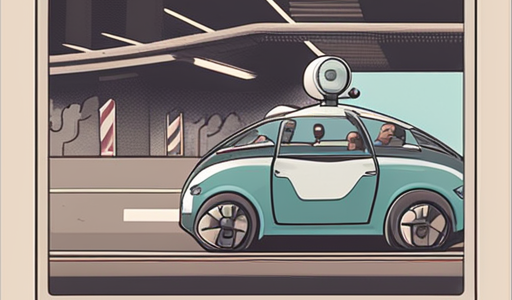Musashi is a humanoid robot which can drive a vehicle at about three miles an hour. It can’t make left turns, but it was able to turn right in a demonstration, though it did so very slowly. Its makers say that it should be ready for market in another 50 years. At this point, you are bound to be thinking, “WTF?” Driverless cars, or autonomous vehicles, will surely be ready for prime time much faster than that. Is this just another example of humanoid robot fixation? Another example of the yawning chasm between proof-of-concept robot experiments and actual usefulness? Or are robot chauffeurs the coming thing, soon to become just as desirable as robot butlers and robot maids?
Why have a robot chauffeur?
A car is already a machine. Why would it make sense to have another machine drive a car? The car could drive itself.
On the other hand, a robotic chauffeur could, in theory, drive any car. This would allow retrofit of current models. Granted, the cost of a robot chauffeur to drive your current care would be much higher than the cost of buying a new Tesla, but you could use your robotic chauffeur in multiple cars over time.
A humanoid robot could also handle tasks beyond driving, like opening doors, fetching items from the car, or even assisting passengers with mobility limitations. A humanoid robot could even potentially provide companionship or entertainment during the ride, especially for passengers who might feel isolated in a self-driving car.
It might be more cool to show up in your chauffeur-driven vehicle, even if the chauffeur is a robot, than driving an autonomous vehicle. We’re not sure about this one, but it’s a possible advantage.
What’s wrong with a self-driving car?
Chauffeurs were always among the most luxurious of servants. They drove people around and cared for their employers’ cars, but that left them with a lot of free time compared with a maid or cook. Modern chauffeurs typically drive many people, since they usually work for a taxi or limousine company or the like.
Robot chauffeurs could not be expected to wash or wax the car, let alone small handle repairs like changing spark plugs or rotating tires.
A robot chauffeur would be an equally limited example of conspicuous consumption. Unless the presence of a humanoid robot made people feel more confident about riding in an autonomous vehicle than they currently do, it’s hard to see much value.
Automation in the factory, on the other hand, is of inestimable value. If your Indramat drive and control solutions need service or support, we can help. Call (479) 422-0390 for immediate assistance.
